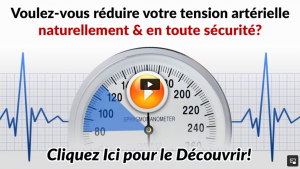The #1 Rated Blood Sugar Formula
What Is Pulsus Paradoxus?

What is normal pulsus paradoxus
Effect on Blood Pressure
When the heart is beating and everything is working the way it's supposed to, expansion of the chest changes the pressure enough to have a small effect on systolic blood pressure (the top number).
Imagine if you were walking up an escalator and someone kept flipping the switch between up and down. Your progress up the escalator is like blood flowing through the arteries. Each step is a little push just like systole pushes blood. Each time the escalator is going up, it's like exhaling and pushing you a little farther up. Each time the escalator is going down, it's like inhaling and you really just stay put even though your legs are moving.
Blood Pressure During Positive Pressure Ventilation
Caregivers who treat patients on ventilators are aware of the effect of positive pressure ventilation on blood return to the heart. In cases of patients with low blood flow conditions, such as those who have just been resuscitated from cardiac arrest, positive pressure ventilation can have a profound effect on blood pressure.
There is a very rare situation of reverse pulsus paradoxus that can occur during right ventricular congestive heart failure.
How Pulsus Paradoxus Is Measured
Recognizing pulsus paradoxus requires the ability to measure systolic blood pressure while the patient is inhaling and exhaling. It can be done with a sphygmomanometer (the device that your healthcare provider uses to measure your blood pressure) but it is best to use an arterial line. An arterial line is a catheter inserted into an artery. It can be used to take blood samples of oxygenated blood or to measure the blood pressure in the arteries continuously and directly.
Significance of Pulsus Paradoxus
No one is quite sure why certain conditions lead to a bigger drop in blood pressure during inhalation than the drop seen in healthy individuals. There is probably a clue in the types of conditions that cause pulsus paradoxus. They all have to do with extra pressure being exerted on the heart.
Medical conditions that can cause pulsus paradoxus
- Cardiac Tamponade
Bleeding from the heart can sometimes lead to blood getting trapped between the heart and the membrane that surrounds the heart (pericardium). The pericardium is very tough and unforgiving. When blood seeps into it, the pericardium doesn't stretch much. The heart gets squeezed by the lack of space left over as blood collects. This condition is known as cardiac tamponade, or sometimes as pericardial tamponade.
- Tension Pneumothorax
Like blood collecting between the heart and the pericardium, air can leak from damaged lungs and become trapped between the lungs and the chest wall. In many cases, the leak is self-limiting. However, when enough air continues to leak and begins to put pressure on the lungs, heart, and major blood vessels, it's known as a tension pneumothorax.
One hallmark of the tension pneumothorax is a significant and consistent drop in blood pressure. Pulsus paradoxus is an earlier sign that occurs as the tension pneumothorax is developing.
- Pericarditis
Besides cardiac tamponade, the pericardium can also cause problems if it becomes infected or inflamed. The stiffening and swelling of the pericardium during an episode of severe inflammation called pericarditis can lead to strain on the heart, interfering with an expansion of the ventricles during diastole.
- Congestive Heart Failure
Decreased function in the ventricles usually following heart muscle damage from a heart attack can lead to a build-up of pressure in the circulatory system. This blood vessel traffic jam is known as congestive heart failure (CHF).
Left ventricular CHF, often simply referred to as left-sided heart failure, leads to pressure building up in the circulation of the lungs.
- Acute Asthma
Difficulty breathing from bronchospasm during acute asthma causes the patient to increase negative pressure in the thorax to compensate. The increased effort has an effect similar to that of backward pressure on circulation from the circulatory conditions listed above. Or, it could be seen as similar to the effect of positive pressure ventilation as described.
- Chronic Obstructive Pulmonary Disease
Respiratory conditions that lead to increased work of breathing have similar effects on bloodpressure. COPD causes the alveoli in the lungs to become delicate and lose their elasticity. Instead of a million rubber balloons, the alveoli become a million sandwich bags that won't push air out during expiration.
Air trapped in the lungs from COPD can lead to a similar type of increased pressure on the circulatory system as CHF creates. And, like acute asthma, chronic obstructive pulmonary disease (COPD) can lead to more work of breathing.
Takeaway
Even with modern medicine, there isn't much consensus on what causes pulsus paradoxus. All we know so far is that it has to do with pressure in the thoracic cavity. All of the conditions that cause pulsus paradoxus affect the pressure inside the chest and breathing always affects that pressure gradient. Indeed, pressure is what keeps blood going round and round, and air going in and out.










